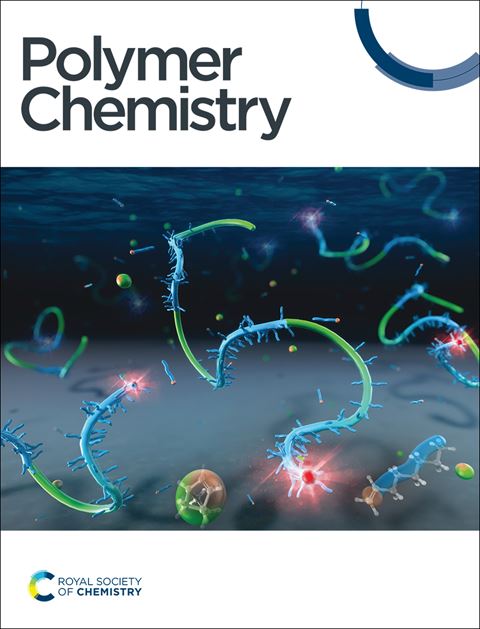不同引发剂在γ-丁内酯中阳离子开环聚合2-恶唑啉
IF 4.1
2区 化学
Q2 POLYMER SCIENCE
引用次数: 0
摘要
溶剂往往是聚合反应中不可缺少的,特别是为了避免高粘度的负面影响。阳离子开环聚合(CROP)对2-恶唑啉的生物相关特性和产品的应用进行了几十年的研究。常用的溶剂乙腈(AN)因其挥发性和毒性引起了可持续性问题。我们在这里报道了生物源,高沸点,高极性,无毒(γ-烷基)γ-丁内酯是2-乙基-2-恶唑啉的有效绿色溶剂。聚合效率和控制与AN相同。通过与2-苯基-2-恶唑啉的嵌段共聚证实了CROP的活性。一系列的有机引发剂,包括磷基酸和羧酸,被用来深入了解结构-活性关系。特别是2,6-二羟基苯甲酸的引发活性首次公开。本研究为提高仿生聚(2-恶唑啉)合成的环境友好性提供了解决方案。本文章由计算机程序翻译,如有差异,请以英文原文为准。
Cationic Ring-Opening Polymerization of 2-Oxazolines in γ-Butyrolactones using Various Initiators
Solvent is often indispensable for polymerization reactions, especially to circumvent the negative effects of high viscosity. Cationic ring-opening polymerization (CROP) of 2-oxazolines has been studied for decades for the bio-related characteristics and applications of the products. The commonly used solvent, acetonitrile (AN), raises sustainability concerns for its volatility and toxicity. We report here that bio-sourced, high-boiling-point, high-polarity, and nontoxic (γ-alkyl) γ-butyrolactones are valid green solvents for the CROP of 2-ethyl-2-oxazoline. Polymerization efficiency and control are found the same as in AN. Livingness of the CROP is confirmed by block copolymerization with 2-phenyl-2-oxazoline. A series of organo-initiators, including phosphorus-based acids and carboxylic acids, are employed to gain insights into the structure-activity relationship. Particularly, it is the first time to disclose the initiating activity of 2,6-dihydroxybenzoic acid. This work provides a solution for enhancing the environmental friendliness of synthesis of biomimetic poly(2-oxazoline).
求助全文
通过发布文献求助,成功后即可免费获取论文全文。
去求助
来源期刊

Polymer Chemistry
POLYMER SCIENCE-
CiteScore
8.60
自引率
8.70%
发文量
535
审稿时长
1.7 months
期刊介绍:
Polymer Chemistry welcomes submissions in all areas of polymer science that have a strong focus on macromolecular chemistry. Manuscripts may cover a broad range of fields, yet no direct application focus is required.
 求助内容:
求助内容: 应助结果提醒方式:
应助结果提醒方式:


